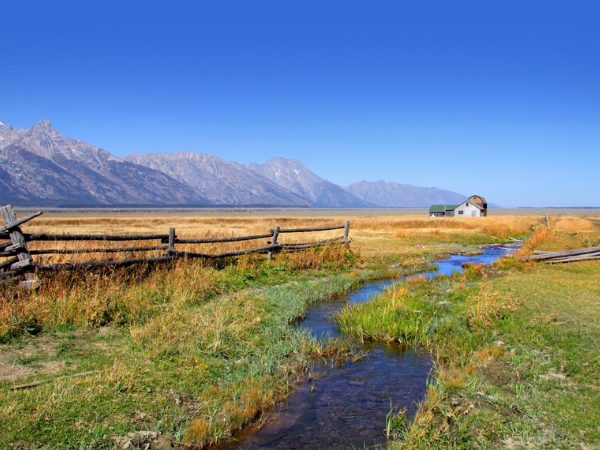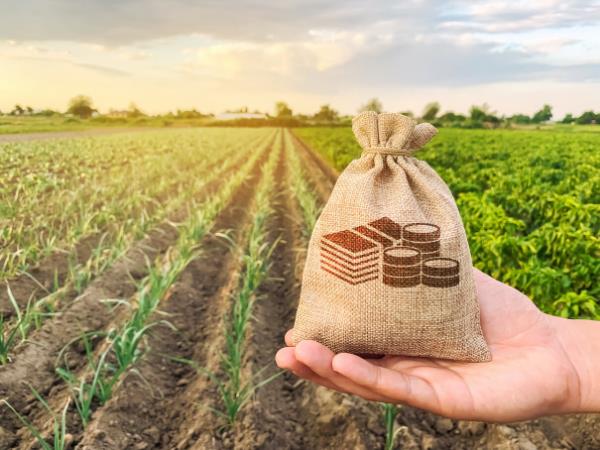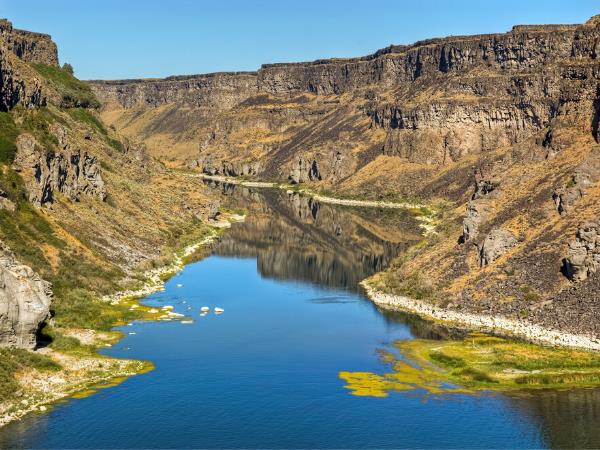Capitol Reflections: 2020 Session Issue 3

“About the Declaration, there is a finality that is exceedingly restful. It is often asserted that the world has made a great deal of progress since 1776, that we have had new thoughts and new experiences which have given us a great advance over the people of that day, and that we may therefore very well discard their conclusions for something more modern. But that reasoning can not be applied to this great charter. If all men are created equal, that is final. If they are endowed with inalienable rights, that is final. If governments derive their just powers from the consent of the governed, that is final. No advance, no progress can be made beyond these propositions. If anyone wishes to deny their truth or their soundness, the only direction in which he can proceed historically is not forward, but backward toward the time when there was no equality, no rights of the individual, no rule of the people. Those who wish to proceed in that direction can not lay claim to progress. They are reactionary. Their ideas are not more modern, but more ancient, than those of the Revolutionary fathers.”
President Calvin Coolidge, July 5, 1926
Governor Cuts More Red Tape
 BOISE - Last week Governor Little signed a pair of Executive Orders designed to provide more certainty and transparency for citizens who are regulated by state agencies. We appreciate Governor Little’s continued attention to reducing regulatory burdens and support his efforts on this issue.
BOISE - Last week Governor Little signed a pair of Executive Orders designed to provide more certainty and transparency for citizens who are regulated by state agencies. We appreciate Governor Little’s continued attention to reducing regulatory burdens and support his efforts on this issue.
Shortly after taking office last year, Governor Little signed an Executive Order commonly referred to as the Red Tape Reduction Act. This directed state agencies to cut two regulations for every new rule which was proposed, similar to President Trump’s successful Executive Order. Since the legislature allowed all rules to expire at the end of the legislative session last year, all agencies were then directed by Governor Little to thoroughly review their rules and only publish those rules that were still necessary and important. This allowed many rules which were no longer functional or enforced to be deleted.
Agencies were also directed to streamline existing rules wherever possible to make them clearer and more understandable. This allowed many chapters and hundreds of pages of rules to be trimmed so the remaining rules are less voluminous and easier to navigate. Now that most of the existing agency rules have gone through a housecleaning exercise, Governor Little has implemented a couple of new directives to reduce regulations.
The first Executive Order replaces the successful Red Tape Reduction Act. It implements a new Zero-Based Regulation directive. Like zero-based budgeting, it requires regulations to be justified on a regular basis. The order stipulates that all agency rules will expire within a scheduled time period to ensure all rules are re-examined at least every five years on an ongoing basis. Those rules that an agency believes should be renewed must be re-proposed through the existing rulemaking process, allowing for public hearings and comments.
When the agency re-proposes an existing rule, it must perform an analysis “to determine whether the benefits the rule intended to achieve are being realized, whether those benefits justify the costs of the rule, and whether there are less-restrictive alternatives to accomplish the benefits.” Further, the agency must “not seek to simply reauthorize their existing rule chapter without a critical and comprehensive review.” Finally, any rules proposed “must reduce the overall regulatory burden, or remain neutral, as compared to the previous rule chapter.”
This Executive Order also places a moratorium on any rulemaking for 2020 unless the rule will: “reduce or remove a regulatory burden”; will “comply with a new statutory requirement”; or will “prevent a substantiated and well-documented threat to public health, peace or safety.”
Finally, this Executive Order also prohibits temporary rules except those that “are intended to avoid an immediate danger” or are required to meet a specific deadline in a statute or a court order.
The second Executive Order limits the use of “guidance” documents by state agencies. These documents are being used more frequently by some agencies and are developed outside of the normal rulemaking process. The EO directs agencies to post all guidance documents on a single page of the agency’s website, organized by subject so the public can easily access these documents. All guidance documents must clearly state “that it is not a new law but is an agency interpretation of existing law.” Only statutes and rules have the force of law. Guidance documents cannot be enforced and should not be used by agencies to coerce or pressure citizens into actions that are not required.
We applaud Governor Little for enacting these two Executive Orders which will bring greater transparency and accountability to the regulatory function of state agencies. We look forward to working with state agencies that regulate agriculture in Idaho to ensure all regulations are as minimal and unobtrusive as possible.
Shade Rule Update
 BOISE - This week both the House and Senate Resources Committees approved IDL’s shade rule after legislators were told by industrial timber lobbyists, agency personnel and some legislators that without the shade rule lawsuits would be rampant from environmental groups who would get sympathetic judges to impose even more draconian measures on landowners. In addition, the major timber companies, IACI, Idaho Forest Owner’s Association (IFOA) and others all support the rule as is. Farm Bureau was alone in questioning the rule’s impact on the property owner's rights to manage their lands.
BOISE - This week both the House and Senate Resources Committees approved IDL’s shade rule after legislators were told by industrial timber lobbyists, agency personnel and some legislators that without the shade rule lawsuits would be rampant from environmental groups who would get sympathetic judges to impose even more draconian measures on landowners. In addition, the major timber companies, IACI, Idaho Forest Owner’s Association (IFOA) and others all support the rule as is. Farm Bureau was alone in questioning the rule’s impact on the property owner's rights to manage their lands.
As it became increasingly clear it would be a very tight vote and likely would pass, Farm Bureau orchestrated a meeting including IDL, DEQ, the Chairmen of the House and Senate Resources Committees, Speaker Bedke and representatives from the Governor’s office to discuss the issue and explore how to move forward in addressing the concerns of Farm Bureau members.
At that meeting, IDL committed to negotiated rulemaking this year on the shade rule. They are already circulating a draft that simplifies the rule, in an attempt to make it easier for landowners to understand and implement without having to hire a forester. Farm Bureau will be fully engaged in the negotiated rulemaking along with IFOA and others to ensure that the rights of private landowners are preserved and protected while we continue to maintain Idaho water quality standards.
Further, IDL has committed to supporting additional studies on the impact of the rule, and to provide the legislature with an economic impact analysis to better quantify the economic burden of the rule on private landowners.
Farm Bureau members’ stories and comments have been instrumental in getting IDL to the negotiating table and recognizing that there are some opportunities to improve the current rule. We look forward to additional positive changes on this issue over the next year. We will continue to provide updates to members as this issue progresses and we encourage members from across the state to engage in the opportunities for public involvement.
Top of the page
Tax Relief Bill Introduced
 BOISE - This week a bill that would provide additional tax relief was introduced by the House Revenue and Taxation Committee which is chaired by Rep Gary Collins (R-Nampa). H352 would increase the current grocery tax credit by 35%, from $100 to $135 per person. Most people don’t file their taxes, and many may not recognize that there is currently a grocery tax credit that is intended to offset the sales tax on groceries purchased. It is a refundable credit on your Idaho income tax forms.
BOISE - This week a bill that would provide additional tax relief was introduced by the House Revenue and Taxation Committee which is chaired by Rep Gary Collins (R-Nampa). H352 would increase the current grocery tax credit by 35%, from $100 to $135 per person. Most people don’t file their taxes, and many may not recognize that there is currently a grocery tax credit that is intended to offset the sales tax on groceries purchased. It is a refundable credit on your Idaho income tax forms.
With the proposed increase, taxpayers will be able to purchase $187.50 of groceries per month free of tax for each eligible credit, or an annual amount of $2,250 of tax-free groceries per family member. This means a family of four would receive a fully refundable credit of $540, or enough to offset the taxes on $9,000 worth of groceries annually. That equates to $750 worth of tax-free groceries per month.
The bill is sponsored by Speaker of the House Scott Bedke, Rep Mike Moyle, Rep Jason Monks, Rep Megan Blanksma, and Chairman Gary Collins.
Speaker Bedke stated: “This would be real tax relief for every man, woman, and child living in the state. Families across Idaho need us to do more to limit the strain taxes put on their budgets. That’s exactly what this bill will do.”
The other benefit of this approach is that the sales tax continues to apply to people who are visiting Idaho or passing through. That allows us to collect sales tax on their grocery purchases which helps to fund services they use while they are here in Idaho.
The Speaker also clarified: “By increasing this Idaho tax credit instead of removing the sales tax on what the state would determine to be groceries, we avoid creating another layer of bureaucracy by deciding what a ‘grocery’ is. This way, Idahoans determine what a grocery is rather than the government deciding for them.” This also means retailers will not have to spend additional time and resources coding their cash registers to determine what qualifies as a grocery and what does not for collecting sales tax.
As a side benefit, even if you don’t spend that much on groceries in a year, you can still receive all the credit. This can be used any way you would like, providing additional money back in your pocket.
The money to pay for the increase in the grocery tax credit (approximately $48 million) would come from the sales tax the state is now collecting from internet sales. That money was set aside in a dedicated fund to provide tax relief. Farm Bureau supports tax relief and simplicity/efficiency in government. Farm Bureau supports H352.
Top of the pageNew Clean Water Rule
 BOISE - On Thursday, EPA Administer Andrew Wheeler and Assistant Secretary of the Army Corps of Engineers R.D. James finalized a new Clean Water Rule to replace the controversial 2015 “Waters of the United States” (WOTUS) rule. Farm Bureau applauds the Trump administration for keeping its promise to address this issue. The new rule will provide much-needed clarity to state and federal jurisdiction.
BOISE - On Thursday, EPA Administer Andrew Wheeler and Assistant Secretary of the Army Corps of Engineers R.D. James finalized a new Clean Water Rule to replace the controversial 2015 “Waters of the United States” (WOTUS) rule. Farm Bureau applauds the Trump administration for keeping its promise to address this issue. The new rule will provide much-needed clarity to state and federal jurisdiction.
Under the Clean Water Act, Congress gave the EPA and Army Corps of Engineers jurisdiction to regulate “navigable” waters. “Navigable” waters are defined in the law as WOTUS. Any waters not regulated by the EPA and the Corps (the federal government) as WOTUS are under the authority of state and local governments.
The term “waters of the United States” has been defined by the EPA and the Corps through regulation, but the definition has been the subject of controversy and multiple Supreme Court decisions over the years. In 2015, the EPA and the Corps enacted a controversial regulation (the “2015 WOTUS rule”) that would have drastically increased their regulatory reach by expanding the definition of WOTUS to include not only all waters in America, but even areas that ordinarily are dry land. In other words, the agencies reinterpreted the law to expand their jurisdiction at the expense of private landowners and the states.
Under the 2015 WOTUS rule, the EPA and the Corps gave themselves unprecedented permitting and enforcement authority over land-use decisions that Congress did not authorize. It gave the federal government enforcement power through the administrative, civil, or criminal processes, including fines and even imprisonment for violations, over areas that had previously been under state or local jurisdiction.
In September, the Trump administration EPA and Corps repealed the controversial 2015 WOTUS rule and proposed a new Clean Water rule clarifying which level of government – federal or state – would oversee water features and dry land that is sometimes wet.
This new rule does not change who oversees permanent waterways, such as lakes, rivers, streams, and other bodies that always or usually contain water. However, the new Clean Water rule draws clear lines indicating that usually dry areas should no longer be considered federal waters. With this new rule, farmers and ranchers will no longer have to hire an entire team of experts to know what is WOTUS on their private property. Clean water and clear rules – that is something that we can all support.
Top of the page
Dr. Garth Taylor’s Financial Condition of Idaho Ag Presentation
 BOISE - Dr. Garth Taylor, University of Idaho economist, presented to both House and Senate Agriculture Committees this week on the financial condition of Idaho agriculture for 2019. He was very optimistic about where Idaho agriculture stood over the year. Telling legislators if he could leave them with only one take away it would be that Idaho ranked 5th in the U.S. in terms of the importance of ag to the state economy.
BOISE - Dr. Garth Taylor, University of Idaho economist, presented to both House and Senate Agriculture Committees this week on the financial condition of Idaho agriculture for 2019. He was very optimistic about where Idaho agriculture stood over the year. Telling legislators if he could leave them with only one take away it would be that Idaho ranked 5th in the U.S. in terms of the importance of ag to the state economy.
Despite some rough dealings with the weather and other conditions for agriculture this year, Dr. Taylor reported that Idaho did very well. Agricultural cash receipts were up 10% this year, making this the 2nd highest cash receipt year for Idaho ever recorded. If you look back to 1997 cash receipts, Idaho is 70% higher today. The state’s cash receipts in agriculture are growing faster than U.S. receipts in agriculture. In his PowerPoint, Dr. Taylor showed a breakdown of the cash receipts in Idaho. Livestock including dairy, beef, other livestock and the crops specifically used in livestock feed, accounts for roughly 75% of Idaho agriculture cash receipts. Dr. Taylor stated “It’s a livestock driven agriculture industry in the state of Idaho. It is no longer a potato or crop driven industry.” Some highlights of cash receipts this year were better milk prices and a new record for potatoes with over a billion dollars. The downside this year was wheat with Dr. Taylor saying that there may not be any relief on the horizon.
When it comes to trade, 20% of exports out of Idaho are ag products. When addressing the issue of trade, Dr. Taylor explained that a huge factor impacting agricultural trade is a strong U.S. dollar. There are ways to fight tariffs that come from these trade wars, but there is no way to fight a strong dollar when it comes to trade. “You can go around tariffs… they are a price control and price controls do not work…a strong dollar is something you cannot go around.” The top countries Idaho exports go to are Canada and Mexico, with China coming in third.
Net farm income went up 50% since last year. It reached $2.7 billion this year, setting a record high for the state. In comparison, U.S. net farm income overall only increased by 10% for 2019. Referring to net farm income over the years Dr. Taylor told legislators, “The national one is just creeping out of this agricultural depression. While Idaho has just shot out of that.” Ag production is growing in GDP faster than the state’s economy.
Dr. Taylor also walked through a graph showing recessions, both in agriculture and the state. The graph clearly showed that agricultural recessions dip further in GDP percentage change than state recessions. He pointed to one agriculture recession where it was down 20% in GDP for one year. “Could you imagine if state GDP did that? Idaho agriculture does it all the time.” Specifically, we see that since 2005 there has been a total of seven ag recessions. There has only been one recession for the state in that same time frame. The biggest impact of these agricultural recessions is the tax revenues received by the state because ag taxes are volatile. Dr. Taylor points to two major reasons for this volatility, proprietor income, and cash accounting. In agriculture you see farmers paying themselves through proprietor income and farming is the only industry that uses cash accounting. Overall, Idaho had a very impressive, record-breaking year when it comes to the financial condition of the industry in 2019.
Top of the page
Idaho Water Users hold their Annual Convention
 BOISE - This past week the Idaho Water Users Association (IWUA) hosted their annual convention in Boise with speakers from across the state to discuss important factors affecting Idaho’s water systems. This conference is always informative and helpful in providing updates on the current state of this essential resource in Idaho. Multiple members of our team attended to continue to be apprised of any issues that may affect our members in this area.
BOISE - This past week the Idaho Water Users Association (IWUA) hosted their annual convention in Boise with speakers from across the state to discuss important factors affecting Idaho’s water systems. This conference is always informative and helpful in providing updates on the current state of this essential resource in Idaho. Multiple members of our team attended to continue to be apprised of any issues that may affect our members in this area.
On Monday, the conference began with meetings of the Resolutions Committee and the Legislative Committee. A legislative proposal of interest to our members may be the authorization given to Idaho Department of Water Resources (IDWR) to begin the adjudication of the Bear River once adjudication in northern Idaho is complete (approximately five years.) Tuesday afternoon, the conference had several presentations on the status of groundwater across Idaho. A broad overview helped illuminate several aquifers around the state that are experiencing issues, and specific presentations illustrated the importance of solutions for aquifer levels in the Eastern Snake Plain (ESPA) and Treasure Valley aquifers. To date, the Idaho Water Resource Board (IWRB) reports their natural flow managed recharge at 89,073 acre-feet on the ESPA. New recharge sites are coming in line, with others in construction and development.
Additionally, a presentation by the IWRB was made on the findings in response to Speaker Bedke’s letter regarding the ESPA Comprehensive Aquifer Management Plan (CAMP). The day concluded with a panel discussion from a variety of stakeholders and organization representatives on aquifer recharge. The general consensus amongst the stakeholders was an appreciation for some of the improvements in the watershed that are being experienced in areas where aquifer recharge has increased groundwater levels. Wednesday morning, reports were given by the IWUA, IDWR, and the Bureau of Reclamation. Wednesday afternoon, there were discussions regarding the Governor’s Salmon Workgroup and what they have discussed in the group’s first six meetings.
These presentations at the conference provided important information on the status of critical water resources in the state. We will continue being involved in these important issues to continue to defend the critical water rights of our members across the state. While there have certainly been some encouraging developments, progression towards a more stable water supply continues to remain a goal we will strive to achieve.
Top of the page
Still can't find what you are looking for? Find by topic:
- Achievement Award (YF&R)
- Actions Alerts
- Advocacy
- Ag Ambassadors
- American Farm Bureau
- American Farm Bureau Policy Book
- Archive Photos
- Articles
- Board of Directors
- Calendar - State/District
- Calendar - County
- Capitol Reflections
- Collegiate Chapters
- Committee Application Form
- Commodities
- Convention Annual
- County Presidents & Board Information
- County Resource Page
- Delegate Form
- Discount Programs
- Discussion Meet
- Discussion Meet - High School
- Education Programs
- Events
- Excellence Award (YF&R)
- Expense Voucher
- Flickr
- Gem State Producer
- High School Discussion Meet
- High School Speech Contest
- Hope in Idaho Ag
- House of Delegates Credentials Form
- IFBF Board of Directors
- IFBF Policy Book
- IFBF Staff
- Insurance
- Legislative Action Program
- Legislative Issues
- Library
- MAC Trailer
- Magazines
- Map My Benefits
- Member Benefits
- Member Discount
- Membership Application
- Mission Statement
- Moving Agriculture to the Classroom
- Newsletter Sign up
- News Releases
- News Room
- Open Range Law
